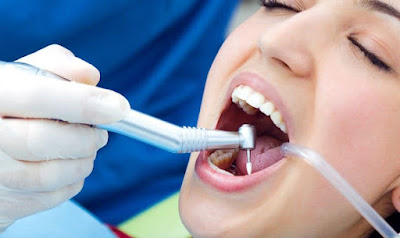Facing a dental emergency can be stressful, especially when you're uncertain about the associated costs and how insurance may come into play. In Medicine Hat, having access to emergency dental care is crucial for maintaining oral health. This article explores the costs associated with emergency dentist medicine hat and delves into insurance coverage, particularly in restorative dentistry.
Understanding Emergency Dentistry Costs:
Initial Consultation and Assessment:
When seeking emergency dental care in Medicine Hat, the first step is often an initial consultation and assessment. This may involve diagnostic procedures to identify the issue and determine the necessary action.
Treatment Procedures:
Emergency dental treatments can encompass a range of procedures, from addressing severe toothaches to managing dental injuries. The costs will vary depending on the nature and complexity of the treatment required.
Diagnostic Imaging:
In some cases, diagnostic imaging such as X-rays may be necessary for a comprehensive evaluation. These imaging procedures contribute to the overall costs of emergency dental care.
Material and Lab Costs:
If restorative dentistry is needed, material costs for dental fillings, crowns, or other restorations will be factored into the expenses. Lab costs for crafting custom restorations may also apply.
After-Hours or Weekend Surcharge:
Emergency dental care is often needed outside regular business hours. Some dental practices may charge an additional fee for services provided during evenings, weekends, or holidays.
Factors Influencing Emergency Dentistry Costs:
Severity of the Emergency:
The complexity and severity of the dental emergency significantly impact the associated costs. Complex procedures or multiple treatments may incur higher expenses.
Type of Treatment Needed:
Different treatments, whether extracting a tooth, performing a root canal, or applying a dental crown, come with varying costs. The type of treatment recommended by the dentist will influence the overall expense.
Location of the Dental Practice:
The location of the dental practice can also affect costs. Urban areas may have higher operating expenses, which can be reflected in the pricing of emergency dental services.
Insurance Coverage for Emergency Dentistry:
Dental Insurance Plans:
Dental insurance plans vary in coverage, and the extent of coverage for emergency dentistry depends on the specific plan. Some plans may cover many emergency procedures, while others may have limitations.
Pre-Existing Conditions:
Pre-existing dental conditions may also influence insurance coverage. Some plans may categorize certain conditions as pre-existing and provide limited coverage for associated emergencies.
Waiting Periods:
Some dental insurance plans have waiting periods before certain procedures are covered. It's essential to be aware of any waiting periods, especially if seeking emergency dentistry shortly after obtaining coverage.
Out-of-Network Providers:
Insurance plans often have a network of preferred providers. Visiting an out-of-network emergency dentist may result in different coverage levels or require additional paperwork for reimbursement.
Navigating Restorative Dentistry Costs:
Dental Fillings:
Restorative dentistry medicine hat often involves dental fillings to address cavities. The cost will depend on the filling material, with options ranging from amalgam to composite.
Dental Crowns:
Dental crowns, used to cover and protect damaged teeth, come with their own set of costs. The material of the crown, such as porcelain or metal, can influence pricing.
Root Canal Therapy:
Root canal therapy is a common restorative procedure. Costs may include the procedure itself, the cost of the dental crown placed afterward, and any associated medications.
Dental Bridges and Implants:
For more extensive restorations like dental bridges or implants, costs can be higher due to the complexity of the procedures and the materials used.
Tips for Managing Emergency Dentistry Costs:
Understand Your Insurance Coverage:
Review your dental insurance plan to understand the extent of coverage for emergency dentistry. Be aware of any limitations, waiting periods, or exclusions that may apply.
Explore Payment Plans:
Some dental practices offer payment plans or financing options to help manage the upfront costs of emergency dental care. Inquire about available payment arrangements.
Contact Your Insurance Provider:
If facing a dental emergency, contact your insurance provider promptly to understand the steps for filing a claim and any documentation required for reimbursement.
Seek Pre-Authorization:
Before undergoing extensive emergency dental procedures, consider seeking pre-authorization from your insurance provider. This can provide clarity on the anticipated coverage for specific treatments.
Conclusion:
Emergency dentistry is a critical aspect of oral healthcare, and understanding the associated costs and insurance coverage is essential for informed decision-making. Whether facing a sudden toothache or requiring restorative dentistry, individuals in Medicine Hat can navigate emergency dental care confidently by being aware of potential costs, exploring insurance coverage, and proactively managing their oral health. In times of urgency, having a clear understanding of the financial aspects ensures that individuals can prioritize their well-being without unnecessary stress.




